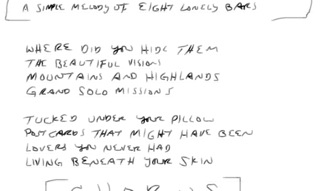I’m going to come clean and admit that I have a horrible case of Seasonal Affective Disorder. I’ve fallen victim to it since my relocation from more civilized latitudes to the harsh climate of Texas. One of the compromises that we made when I moved here was that I would get to complain about the heat from May through September. And all kidding aside, it’s pretty brutal. In Houston we’ve had serious drought and 20+ days of temperatures over 100F. Seriously. It’s painful.
In these dog days of summer, I find that my creative output drops significantly. I can’t bring myself to read anything worthwhile. My attention is captured by the Internet, video games, and watching beads of condensation run down my ever full glass of ice water. I complain about not getting anything done and my wife, patient as ever, reminds me that what usually works is re-reading The War of Art by Steven Pressfield. And she’s right.
I’ve given away several copies of the book and have turned on at least a dozen people to it. Some of them clicked with it the way that I did and others got a weird taste from it. All agreed that it was good stuff, but the presentation worked for some and not others. I feel good for getting other eyes on the book, but the eyes that really need to be on it are mine because the book Just Worksâ„¢ for me.
I don’t know if it’s the simple structure – generally one page per idea – or the voice of the author that makes it hit home for me the way that it does. Honestly, like most of the things surrounding my creative process, I don’t question it much because it works. And when something works, I don’t really want to mess with it. What Pressfield does, better than anyone else I’ve read, is remind me of why it is I do what I do. I do it because I have to. And like everything else that I really, really have to do, I feel really, really bad when I don’t do it. Much like eating, drinking, and sleeping, creative work is something that I do because it is necessary. And like those other things, I can only go so long without it before negative effects set in.
I’ve been in a rut for the past 3 or 4 weeks. Finally, Sunday morning, I sat down and started to go through The War of Art again. Again I found it instantly inspiring and I’m ready to get my ass back in the seat and get back to work. Yes, my wife is right again. And yes, you should read or re-read Pressfield’s genius right now. No matter what you’re doing, it will help.

